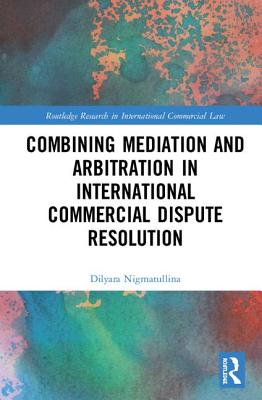Securing fast, inexpensive and enforceable redress is vital for the development of international commerce. The combined use of mediation and arbitration has emerged as a dispute resolution approach offering these benefits. This book investigates the value of the combined use of mediation and arbitration in commercial dispute resolution.
Securing fast, inexpensive, and enforceable redress is vital for the development of international commerce. In a changing international commercial dispute resolution landscape, the combined use of mediation and arbitration has emerged as a dispute resolution approach which offers these benefits. However, to date there has been little agreement on several aspects of the combined use of processes, which the literature often explains by reference to the practitioner’s legal culture, and there is debate as to how appropriate it is for the same neutral to conduct both mediation and arbitration.
Identifying the main ways of addressing concerns associated with the same neutral conducting both mediation and arbitration (same neutral (arb)-med-arb), this book examines how effectively these methods achieve the goal of fast, inexpensive, and enforceable dispute resolution, evaluating to what extent the perception and use of the same neutral (arb)-med-arb depends on the practitioner’s legal culture, arguing that this is not a ‘one-size-fits-all’ process.
Presenting an empirical study of the combined use of mediation and arbitration in international commercial dispute resolution, this book synthesises existing ways of addressing concerns associated with the same neutral (arb)-med-arb to provide recommendations on how to enhance the use of combinations in the future.
Get Combining Mediation and Arbitration in International Commercial Dispute Resolution by at the best price and quality guranteed only at Werezi Africa largest book ecommerce store. The book was published by Taylor & Francis Ltd and it has pages. Enjoy Shopping Best Offers & Deals on books Online from Werezi - Receive at your doorstep - Fast Delivery - Secure mode of Payment
 Jacket, Women
Jacket, Women
 Woolend Jacket
Woolend Jacket
 Western denim
Western denim
 Mini Dresss
Mini Dresss
 Jacket, Women
Jacket, Women
 Woolend Jacket
Woolend Jacket
 Western denim
Western denim
 Mini Dresss
Mini Dresss
 Jacket, Women
Jacket, Women
 Woolend Jacket
Woolend Jacket
 Western denim
Western denim
 Mini Dresss
Mini Dresss
 Jacket, Women
Jacket, Women
 Woolend Jacket
Woolend Jacket
 Western denim
Western denim
 Mini Dresss
Mini Dresss
 Jacket, Women
Jacket, Women
 Woolend Jacket
Woolend Jacket
 Western denim
Western denim
 Mini Dresss
Mini Dresss






























































